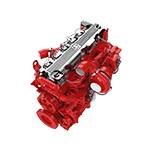Ноя . 18, 2024 22:50 Back to list
brake drum removal tips
Tips for Brake Drum Removal
Removing brake drums can be a daunting task for many do-it-yourself enthusiasts, but with the right tools and techniques, it can be done efficiently and safely. Whether you’re replacing worn-out drums, changing brake shoes, or simply inspecting your braking system, following a systematic approach can make the job much easier. Here are some essential tips for brake drum removal.
1. Gather Necessary Tools
Before you begin, ensure that you have all the necessary tools on hand. These typically include
- Safety glasses - Gloves - A lug wrench - A jack and jack stands - A brake drum puller (if necessary) - A ratchet set - Screwdrivers (flathead and Phillips)
Having the right tools will not only save you time but also make the process safer.
2. Ensure Safety First
Safety should always be your top priority. Begin by working in a well-ventilated area and wearing protective gear. When lifting the car, use jack stands to stabilize it after raising it with the jack. Never rely solely on the jack, as it can fail, posing a serious risk.
3. Loosen Lug Nuts
Before lifting the vehicle, slightly loosen the lug nuts on the wheel where the brake drum is located. Turn them counterclockwise just enough to break their initial grip, but do not remove them completely yet. This allows you to avoid the wheel spinning when attempting to loosen the nuts after the car is elevated.
4. Lift the Vehicle
Once the lug nuts are loosened, carefully use the jack to lift the vehicle until it is high enough to work comfortably underneath. Make sure it is level and stable, and then secure it with jack stands. Never work under a car that is only supported by a jack, as it can be extremely dangerous.
5. Remove the Wheel
brake drum removal tips

Once the vehicle is safely elevated and secured, remove the lug nuts completely and take off the wheel
. This will expose the brake drum, allowing you to proceed with the removal.6. Inspect the Brake Components
Before removing the drum, take a moment to inspect the brake components. Look for signs of wear or damage on the brake shoes, springs, and other related parts. This can save you time in the long run by identifying any potential issues that need to be addressed during the drum removal process.
7. Remove the Brake Drum
In most cases, the brake drum is held in place by the wheel’s lug nuts. However, sometimes the drum can be stubborn due to rust or corrosion. If necessary, gently tap around the edge of the drum with a rubber mallet to loosen it. Be careful not to hit too hard, as you can damage the drum or the components inside the brake assembly.
If the drum still won’t budge, a brake drum puller can be highly effective. These tools provide leverage to pull the drum off without excessive force. Follow the instructions for your specific puller to avoid damaging the brake system.
8. Clean and Inspect
Once the drum is removed, take the opportunity to clean the surface where the drum contacts the wheel hub. Use a wire brush to remove any corrosion or debris, as this will help ensure a good fit for the new drum or cleaned components. Inspect the condition of the brake shoes and other parts closely for any signs of excessive wear or damage.
9. Installation of New Drum
If you're replacing the drum, ensure that the new drum is compatible with your vehicle. Install it by reversing the removal process. Line up the new drum with the wheel hub, ensuring that it sits flush against the backing plate of the brakes.
Once the drum is in place, reinstall the wheel, tightening the lug nuts in a star pattern to ensure even pressure. Finally, lower the vehicle back to the ground and perform a final torque check on the lug nuts.
Conclusion
Removing brake drums may seem intimidating, but with the right mindset and preparation, it can be a straightforward task. By following these tips and practicing proper safety measures, you can confidently tackle brake drum removal and keep your vehicle’s braking system in top shape. Remember, if you're ever unsure, don’t hesitate to consult a professional mechanic. Your safety is paramount!
-
Discover HYUNDA: Innovative Vehicles, Equipment & Solutions
NewsAug.14,2025
-
R.V.I: Unlock Advanced Insights & Real-time Performance
NewsAug.13,2025
-
Kamaz Brake Drum: Durable & Reliable for Heavy Duty Trucks
NewsAug.12,2025
-
Heavy Duty Iveco Brake Drum - Premium Quality & Safety
NewsAug.11,2025
-
DAF Water Treatment Solutions: Efficient Solids & Oil Removal
NewsAug.10,2025
-
Genuine Nissan Brake Drums | OEM Fit & Performance
NewsAug.09,2025
